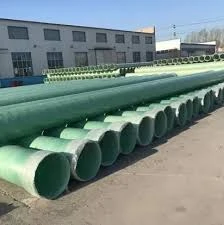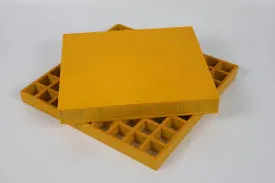
-
 Afrikaans
Afrikaans -
 Albanian
Albanian -
 Amharic
Amharic -
 Arabic
Arabic -
 Armenian
Armenian -
 Azerbaijani
Azerbaijani -
 Basque
Basque -
 Belarusian
Belarusian -
 Bengali
Bengali -
 Bosnian
Bosnian -
 Bulgarian
Bulgarian -
 Catalan
Catalan -
 Cebuano
Cebuano -
 China
China -
 China (Taiwan)
China (Taiwan) -
 Corsican
Corsican -
 Croatian
Croatian -
 Czech
Czech -
 Danish
Danish -
 Dutch
Dutch -
 English
English -
 Esperanto
Esperanto -
 Estonian
Estonian -
 Finnish
Finnish -
 French
French -
 Frisian
Frisian -
 Galician
Galician -
 Georgian
Georgian -
 German
German -
 Greek
Greek -
 Gujarati
Gujarati -
 Haitian Creole
Haitian Creole -
 hausa
hausa -
 hawaiian
hawaiian -
 Hebrew
Hebrew -
 Hindi
Hindi -
 Miao
Miao -
 Hungarian
Hungarian -
 Icelandic
Icelandic -
 igbo
igbo -
 Indonesian
Indonesian -
 irish
irish -
 Italian
Italian -
 Japanese
Japanese -
 Javanese
Javanese -
 Kannada
Kannada -
 kazakh
kazakh -
 Khmer
Khmer -
 Rwandese
Rwandese -
 Korean
Korean -
 Kurdish
Kurdish -
 Kyrgyz
Kyrgyz -
 Lao
Lao -
 Latin
Latin -
 Latvian
Latvian -
 Lithuanian
Lithuanian -
 Luxembourgish
Luxembourgish -
 Macedonian
Macedonian -
 Malgashi
Malgashi -
 Malay
Malay -
 Malayalam
Malayalam -
 Maltese
Maltese -
 Maori
Maori -
 Marathi
Marathi -
 Mongolian
Mongolian -
 Myanmar
Myanmar -
 Nepali
Nepali -
 Norwegian
Norwegian -
 Norwegian
Norwegian -
 Occitan
Occitan -
 Pashto
Pashto -
 Persian
Persian -
 Polish
Polish -
 Portuguese
Portuguese -
 Punjabi
Punjabi -
 Romanian
Romanian -
 Russian
Russian -
 Samoan
Samoan -
 Scottish Gaelic
Scottish Gaelic -
 Serbian
Serbian -
 Sesotho
Sesotho -
 Shona
Shona -
 Sindhi
Sindhi -
 Sinhala
Sinhala -
 Slovak
Slovak -
 Slovenian
Slovenian -
 Somali
Somali -
 Spanish
Spanish -
 Sundanese
Sundanese -
 Swahili
Swahili -
 Swedish
Swedish -
 Tagalog
Tagalog -
 Tajik
Tajik -
 Tamil
Tamil -
 Tatar
Tatar -
 Telugu
Telugu -
 Thai
Thai -
 Turkish
Turkish -
 Turkmen
Turkmen -
 Ukrainian
Ukrainian -
 Urdu
Urdu -
 Uighur
Uighur -
 Uzbek
Uzbek -
 Vietnamese
Vietnamese -
 Welsh
Welsh -
 Bantu
Bantu -
 Yiddish
Yiddish -
 Yoruba
Yoruba -
 Zulu
Zulu
Jan . 20, 2025 04:26
Back to list
Transport Tanks
Navigating the innovative landscape of infrastructure materials, fiberglass sewer pipes have emerged as a robust solution for modern sewage systems. As urban areas expand and the demands on sewage systems intensify, the quest for materials that balance durability, performance, and cost-effectiveness is paramount. Here, we delve into the nuances of fiberglass sewer pipes, exploring their benefits, applications, and the expertise underpinning their use.
Such benefits in durability and maintenance are accompanied by fiberglass pipes' flexibility in design and manufacturing. They can be tailored to meet specific project demands, whether it’s for varying diameters, pressure ratings, or custom fittings, ensuring seamless integration into existing systems. This adaptability is an expert's choice for bespoke solutions required in complex urban environments, where space and integration within older infrastructures pose significant challenges. The credibility of fiberglass sewer pipes is reinforced through rigorous testing and certification from esteemed industry standards. Numerous case studies underscore their performance, validated by governmental bodies and independent testing facilities that certify their compliance with global safety and environmental regulations. Such authoritative endorsements instill confidence in stakeholders, from contractors to end-users, fostering trust in fiberglass as a material of choice for sewage infrastructure. Furthermore, the environmental impact of materials is a critical consideration in today's sustainability-focused world. Fiberglass pipes are inherently more sustainable due to their longevity and reduced need for frequent replacements. The manufacturing process of fiberglass is also evolving, with advances leading to lower emissions and decreased environmental footprint, aligning with broader environmental goals and policies. In conclusion, fiberglass sewer pipes represent a sophisticated integration of modern material science with the practical demands of urban infrastructure. Their deployment is not just about meeting current needs but about paving the way for future developments that prioritize durability, efficiency, and sustainability. For project managers, civil engineers, and procurement officials, the choice of fiberglass sewer pipes is a testament to informed decision-making backed by comprehensive understanding and authoritative validation.


Such benefits in durability and maintenance are accompanied by fiberglass pipes' flexibility in design and manufacturing. They can be tailored to meet specific project demands, whether it’s for varying diameters, pressure ratings, or custom fittings, ensuring seamless integration into existing systems. This adaptability is an expert's choice for bespoke solutions required in complex urban environments, where space and integration within older infrastructures pose significant challenges. The credibility of fiberglass sewer pipes is reinforced through rigorous testing and certification from esteemed industry standards. Numerous case studies underscore their performance, validated by governmental bodies and independent testing facilities that certify their compliance with global safety and environmental regulations. Such authoritative endorsements instill confidence in stakeholders, from contractors to end-users, fostering trust in fiberglass as a material of choice for sewage infrastructure. Furthermore, the environmental impact of materials is a critical consideration in today's sustainability-focused world. Fiberglass pipes are inherently more sustainable due to their longevity and reduced need for frequent replacements. The manufacturing process of fiberglass is also evolving, with advances leading to lower emissions and decreased environmental footprint, aligning with broader environmental goals and policies. In conclusion, fiberglass sewer pipes represent a sophisticated integration of modern material science with the practical demands of urban infrastructure. Their deployment is not just about meeting current needs but about paving the way for future developments that prioritize durability, efficiency, and sustainability. For project managers, civil engineers, and procurement officials, the choice of fiberglass sewer pipes is a testament to informed decision-making backed by comprehensive understanding and authoritative validation.
Next:
Related Products
Latest news
-
Exploring the Benefits of Top Hammer Drifter Rods for Enhanced Drilling PerformanceNewsJun.10,2025
-
High-Precision Fiberglass Winding Machine for GRP/FRP Pipe Production – Reliable & Efficient SolutionsNewsJun.10,2025
-
FRP Pipes & Fittings for Shipbuilding - Corrosion-Resistant & LightweightNewsJun.09,2025
-
Premium FRP Flooring Solutions Durable & Slip-ResistantNewsJun.09,2025
-
Premium Fiberglass Rectangular Tanks Durable & Lightweight SolutionNewsJun.09,2025
-
Tapered Drill String Design Guide Durable Performance & UsesNewsJun.09,2025









